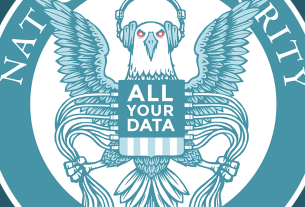The hospitality industry is full of opportunities, but it also has some challenges. These include high costs, competition, and shifting regulations. While hotels and other businesses in the sector need to establish sound financial management practices, it can be difficult to find time for extensive training.

Source: Unsplash
According to IBIS World, the revenues generated by the hotels and motels industry in 2022 have reached $258.1 billion. The industry has grown 4% per annum on average between 2017 to 2022. But if you’re planning to build a business in the hospitality industry, you need a well-rounded financial management strategy.
To help you out, we’ve compiled a list of five effective hospitality industry financial management practices that will help you manage your finances like a pro. Let’s take a look.
Leveraging Revenue Management Solutions
Revenue management is the practice of managing the flow of revenue in and out of a business. It involves creating, maintaining, and adjusting prices to maximize profits.
Revenue management solutions are used by businesses to maximize profits by monitoring demand for their products or services and adjusting prices accordingly. For example, if you run a restaurant that sells sandwiches for $5 each, your revenue will be highest when you sell 100 sandwiches per day at $5 per sandwich (the maximum price consumers would pay).
However, if the price were raised to $8 per sandwich without changing demand for sandwiches overall, revenue would fall because fewer people would buy them at this higher price point.
By contrast with profit maximization strategies focused on increasing sales volume through lower prices (which help boost market share), revenue management seeks to increase revenues while keeping costs constant or increasing them only slightly, or even decreasing them. That is, as long as revenues increase enough over time due to increased market share gained through lower pricing policies.
Using a Scheduling Tool to Automate Employee Schedules
As per the Digital Journal, the employee scheduling software market was worth $358.7 million in 2021. It is expected to expand at a CAGR of 14.78% between 2021 and 2027, reaching $820.01 million in 2027.
Automated scheduling tools are a great way to automate your employee scheduling process and save time and money. With an automated scheduling tool, you can create a schedule template, then program it to fill in shifts automatically.
This means that the system will automatically assign shifts based on preferences, availability, and other parameters set by management. Automated scheduling tools can help with labor costs by ensuring that employees are only scheduled for enough hours per week that can be worked without affecting their productivity or taking into account any overtime.
Implementing a Point-Of-Sale (POS) System
Implementing a point-of-sale (POS) system is the most important tool for financial management in the hospitality industry. A POS system automates accounting and reporting, allowing you to track inventory, sales, and cash flow.
It also helps you manage your employees by providing payroll reports and time off requests. Most importantly, it allows you to manage your customers through loyalty programs that reward repeat business and group discounts based on customer profile information entered into the system at checkout.
As per Fortune Business Insights, the POS market was worth $25.24 billion in 2021. It is expected to grow to $70.75 billion by 2029, with a growth rate of 15.09%. It highlights the widespread use and growing segment of POS solutions across all industries.
Increasing Revenue by Cross-Selling and Upselling
As you might expect, cross-selling and upselling are two sides of the same coin. On the one hand, cross-selling is when a customer buys something that they didn’t originally intend to buy. For example, if a customer comes in for dinner and ends up ordering dessert as well.
On the other hand, upselling is when a customer buys something that they originally intended to buy at a higher price point. For example, if someone decides to order wine with dinner instead of beer because it’s more expensive.
Both techniques can be effective in increasing revenue. However, it’s important not to overdo it or try too hard in either case. Cross-selling works best when used sparingly (one item at most), while upselling should always be subtle and done naturally by asking questions like “Do you want any cheese with those fries?” rather than outright offering them without being asked first.
Using a Spreadsheet to Monitor Inventory Levels
In addition to keeping a close watch on your accounts payable, it’s a good idea to monitor inventory levels. Inventory is the physical goods that are held by a business.
Inventory management is the process of ensuring that the right amount of inventory is available at the right time to meet customer demand, minimize costs and reduce the risk of loss or theft. As you might imagine, monitoring your inventory management practices can help you avoid costly errors and ultimately save you money.
Conclusion
If you’re in the hospitality industry, you must have a good understanding of financial management. This can help you improve your business and avoid any potential pitfalls that may befall it.
Whether you’re looking for ways to increase revenue or reduce costs, we hope these hospitality industry financial management practices tips will get you on the right track.
The post 5 Effective Financial Management Practices Used in the Hospitality Industry appeared first on The Startup Magazine.



